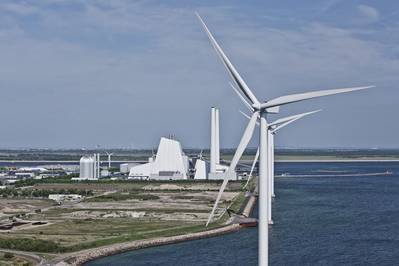Ørsted Breaks Ground on Carbon Capture Project
Ørsted is embarking on the construction of two carbon capture (CCS) facilities designed to capture and store carbon emissions from the woodchip-fired Asnæs Power Station in Kalundborg and the straw-fired unit at Avedøre Power Station in Greater Copenhagen, representing Denmark's first full-scale carbon capture project.
It is expected that the carbon capture project, which was awarded a 20-year contract by the Danish Energy Agency in May 2023, will capture 430,000 tonnes of biogenic CO2 annually from the two combined heat and power plants starting from early 2026. The capture and storage of carbon from straw- and woodchip-fired power stations remove CO2 from the atmosphere, making a substantial contribution to Denmark's climate targets for 2025 and 2030.
Ørsted hosted a groundbreaking ceremony on December 4. 2023, at Avedøre Power Station to celebrate the commencement of construction of Denmark's first full-scale carbon capture project.
Fast Facts about the ‘Ørsted Kalundborg CO2 Hub’ project:
- The ‘Ørsted Kalundborg CO2 Hub’ project aims to capture and store 430,000 tons of CO2 annually from early 2026, equivalent to the annual carbon emissions from approximately 200,000 petrol-powered cars.
- Ørsted will capture 150,000 tonnes of biogenic CO2 per year from the straw-fired unit at Avedøre Power Station. The CO2 will initially be transported by lorry to Asnæs Power Station until a shared pipeline infrastructure across Zealand has been established.
- The straw-fired unit at Avedøre Power Station converts locally sourced straw into electricity and district heating. The straw used is a by-product of agriculture.
- Ørsted will capture 280,000 tonnes of biogenic CO2 per year from the wood chip-fired unit at Asnæs Power Station, which will also function as a CO2 hub, handling and shipping biogenic carbon from both the Avedøre and Asnæs combined heat and power plants to the Northern Lights storage reservoir in the Norwegian part of the North Sea.
- The wood chip-fired unit at Asnæs Power Station converts wood chips, primarily sourced from the Baltics, into electricity, district heating, and process steam for the local industry. The wood chips come from sustainably managed production forests and consist of surplus wood from sawmills or residues from trimming or crooked trees.









